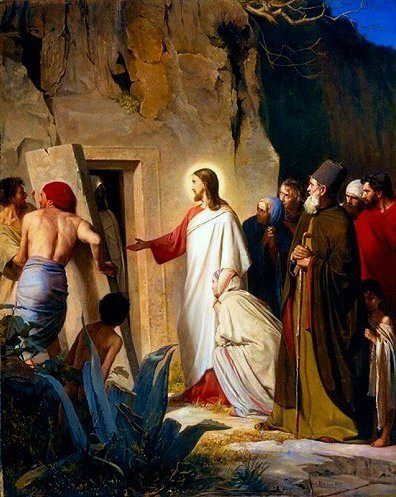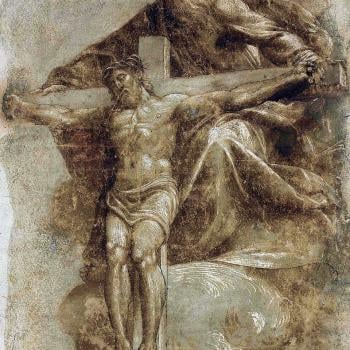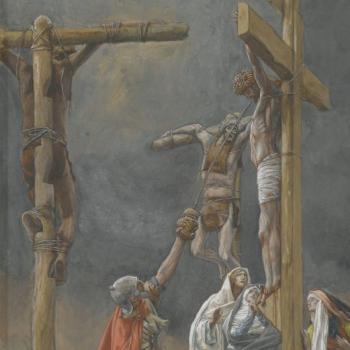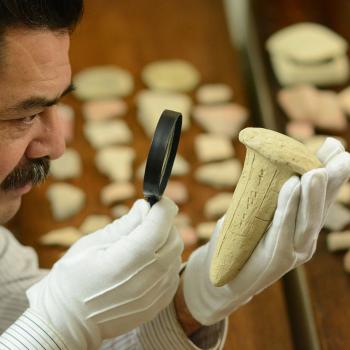
In John’s Gospel, there are two resurrections: the resurrections of Lazarus and Jesus. The greatest miraculous sign Jesus performs prior to his own resurrection is raising Lazarus from the dead, as recorded in John 11. In Charles Dickens’ A Tale of Two Cities, I find two resurrections—that of Frenchman Charles Darnay and that of Englishman Sydney Carton.
In the crucible of the French Revolution, Carton, who bears a striking resemblance to Darnay, exchanges clothes and changes places with Darnay who awaits execution in a prison cell. Carton cunningly delivers his unsuspecting friend Darnay from his prison cell and impending execution at the guillotine to new life and offers himself up in Darnay’s place in sacrificial death by that same instrument of horror. Carton redeems his own derelict life and infuses it with resurrected meaning by sacrificing himself for Darnay, his wife, and their daughter. As Carton approaches the guillotine, he quotes from John 11: “I am the resurrection and the life.” In fact, he quotes or alludes to that Scripture on several occasions in Dickens’ narrative. Carton also says,
“I see a beautiful city and a brilliant people rising from this abyss. I see the lives for which I lay down my life, peaceful, useful, prosperous and happy. I see that I hold a sanctuary in their hearts, and in the hearts of their descendants, generations hence. It is a far, far better thing that I do, than I have ever done; it is a far, far better rest that I go to than I have ever known.”
In my own family’s situation, I hope for two resurrections: Christopher’s resurrection now from his brain-traumatized comatose bed and his resurrection to new life at the end of the age. Still, if I could take Dickens’ pen and rewrite the script, I would certainly change clothes and neurological places with my son so that he can return to be with his wife and young daughter, his mother and sister, as I told a nurse the other day. I would even throw in these Carton lines for good measure: It would be “a far, far better thing that I do, than I have ever done;” it would be “a far, far better rest that I go to than I have ever known.” However, medically that is impossible. And even if meaningful recovery is deemed medically impossible in the minds of some, as a doctor intimated (though a neurosurgeon and a medical consultant with several decades of experience in such precarious situations begged to differ), still I pray for a medical miracle. After all, I pray to the one who is the resurrection and the life. As Jesus said to Martha,
“I am the resurrection and the life. The one who believes in me will live, even though they die; and whoever lives by believing in me will never die. Do you believe this?” (John 11:25-26; NIV)
Here is a selection from John 11 involving Mary and Martha, the crowds, and Jesus, who had arrived too late to keep Lazarus from dying:
When Mary reached the place where Jesus was and saw him, she fell at his feet and said, “Lord, if you had been here, my brother would not have died.”
When Jesus saw her weeping, and the Jews who had come along with her also weeping, he was deeply moved in spirit and troubled. “Where have you laid him?” he asked.
“Come and see, Lord,” they replied.
Jesus wept.
Then the Jews said, “See how he loved him!”
But some of them said, “Could not he who opened the eyes of the blind man have kept this man from dying?”
Jesus, once more deeply moved, came to the tomb. It was a cave with a stone laid across the entrance. “Take away the stone,” he said.
“But, Lord,” said Martha, the sister of the dead man, “by this time there is a bad odor, for he has been there four days.”
Then Jesus said, “Did I not tell you that if you believe, you will see the glory of God?”
So they took away the stone. Then Jesus looked up and said, “Father, I thank you that you have heard me. I knew that you always hear me, but I said this for the benefit of the people standing here, that they may believe that you sent me.”
When he had said this, Jesus called in a loud voice, “Lazarus, come out!” The dead man came out, his hands and feet wrapped with strips of linen, and a cloth around his face.
Jesus said to them, “Take off the grave clothes and let him go.” (John 11:32-44; NIV)
Just as I sense a connection to Sydney Carton and his derelict life longing for redemption in A Tale of Two Cities, so I sense a connection to a grieving Mary, Martha, and crowd in John 11. Here are the prayerful connections I make for Christopher in view of Lazarus, whose name means “God has helped”:
In Mary-like fashion, I say: Lord, if you had been there, my son Christopher would not have endured a devastating brain injury…
Still Lord, you weep over Christopher. How much you love him…
In crowd-like fashion, I say: Lord, could not you who raised Lazarus to new life and brought sight to the blind man have kept my son from his traumatic brain injury and comatose bed?
In Martha-like fashion, I say: Lord, by this time, the prospects for meaningful recovery are not great given the extent of damage and over seventy days in a comatose state.
Lord Jesus, will you say the Martha-like line to me? “Did I not tell you that if you believe, you will see the glory of God?”
Yes, Lord—I believe! You are the resurrection and the life! May we see the glory of God! May it be said of our own Lazarus, Christopher, that “God has helped.”












